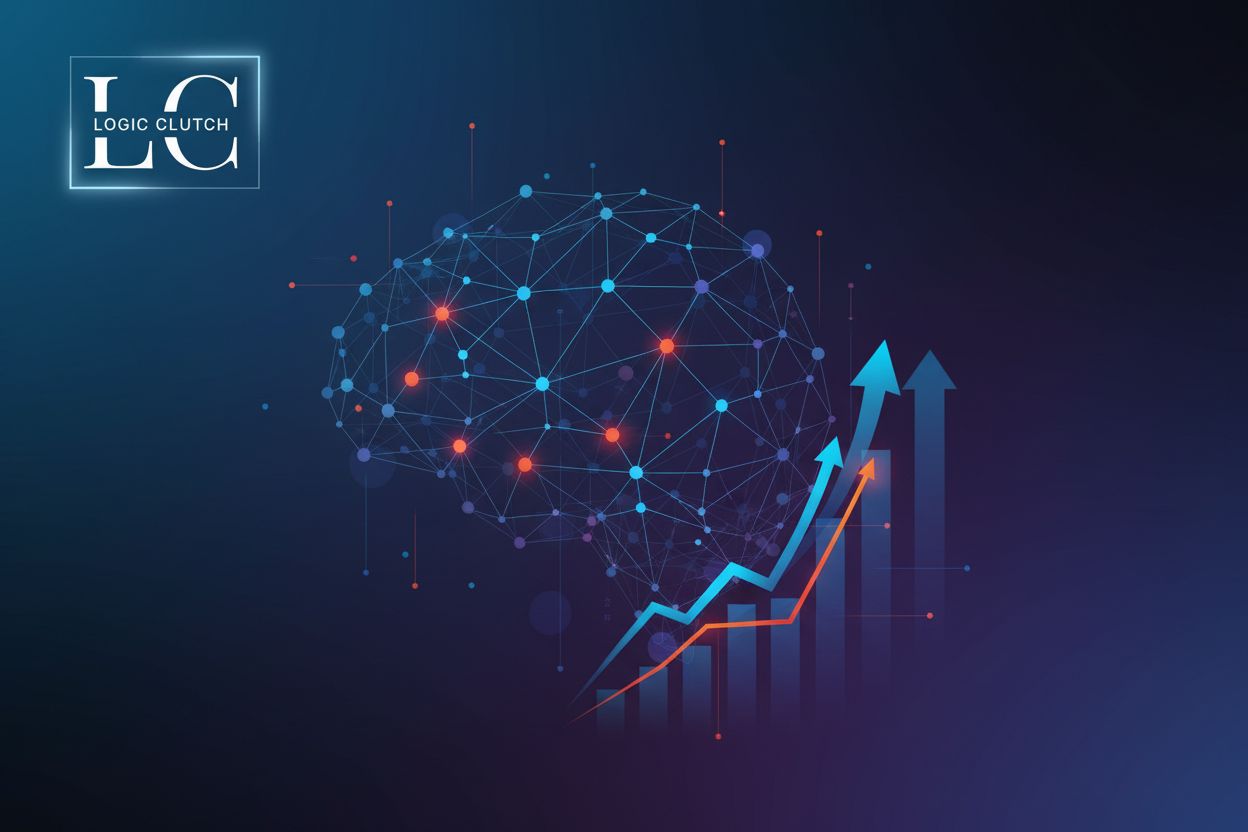Automated AI Tools for Enhanced Enterprise Analytics
TL;DR
Introduction: The AI Revolution in Enterprise Analytics
Okay, let's dive into how ai is changing the game in enterprise analytics. It's kinda wild, right? I mean, who would've thought we'd be here, but yeah, it's happening--and fast.
Data's importance as a business asset has exploded. (Exploding the Myth of “Data is an Asset” by Patrick Dewald) Companies are drowning in info, but it's useless if you can't analyze it. Think healthcare orgs needing to predict patient surges or retailers optimizing supply chains in real-time. This is a big problem, and traditional methods just can't keep up.
Efficient analytics is now a must-have. Traditional methods are too slow and often inaccurate. (What is The Problem with Traditional Education Methods?) Imagine a financial institution trying to detect fraud using old-school spreadsheets... not gonna cut it!
Traditional analytics faces big challenges, like data silos and a lack of skilled analysts. it's like trying to build a house with only a hammer and some nails--you need a whole toolbox! Ai is the new toolbox we need.
Ai automates a lot of the tedious analytics work, freeing up humans for more strategic stuff. (How AI can free you up for more strategic work - LinkedIn) Think of marketing teams using ai to automatically segment customers for personalized campaigns.
Accuracy and speed get a major boost with ai. No more waiting weeks for reports only to find out they're full of errors. StoryChief mentioned that ai empowers companies to "work smarter" and "make better decisions."
Ai helps uncover hidden insights that humans might miss. For example, a manufacturing plant using ai to analyze sensor data and identify patterns that predict equipment failures.
So, what's next? Well, we'll need new tools to handle all this ai-powered analysis, like advanced platforms that can process and interpret complex data streams.
Understanding Automated AI Tools
Alright, let's get into the nitty-gritty of automated ai tools. It's not just about robots taking over; it's more like giving them a helpful assistant badge, ya know?
Automated ai tools are basically software that uses artificial intelligence to handle tasks with minimal human intervention. Think of it as analytics on autopilot.
- These tools use a blend of technologies. Machine learning algorithms allow the software to get better over time; for instance, a system predicting equipment failure in a manufacturing plant becomes more accurate as it analyzes more data.
- Natural language processing (nlp) helps the tool understand and respond to human language, enabling things like automated customer service chatbots that actually make sense.
What's the big deal, though? Well, automated ai offers specific advantages over traditional methods.
- Speed is a major factor. Instead of waiting for reports, you get real-time insights. Imagine a retail chain instantly adjusting prices based on current demand, something impossible with old-school spreadsheets.
- Accuracy gets cranked up too. Ai can catch errors that humans miss, like spotting subtle fraud patterns in financial transactions.
- Beyond just speed and precision, ai can also find hidden patterns. For example, a healthcare provider might use it to identify previously unnoticed correlations between patient demographics and treatment outcomes.
So, what's next? We'll need to look at the different flavors of these automated ai tools. Stay tuned, it gets even more interesting from here.
AI Tools in Salesforce CRM: A Powerful Combination
So, you're thinking about sticking ai into your salesforce crm? Good move. It's not just hype; it can seriously boost your analytics game. But, like, how does that even work?
Salesforce crm is great, right? Keeps all your customer info in one place. But, let's be honest, the standard analytics can only take you so far. Think of it like this: you have all these puzzle pieces (customer data), but putting them together manually to see the big picture? that's time-consuming and, frankly, kinda prone to human error.
- Limitations of Standard Analytics: Basic crm analytics mostly just shows you what happened. Ai can tell you why and even predict what will happen. For example, instead of just seeing that sales were down last quarter, ai can analyze tons of data points to figure out why deals are stalling and who's most likely to churn. That's actionable insight.
- AI to the Rescue: Ai doesn't just automate reports; it supercharges your crm. It can identify patterns in customer behavior that no human could ever spot, leading to better sales strategies, more personalized marketing, and happier customers. And who doesn't wants that?
Imagine a financial services company trying to reduce customer churn. With ai in Salesforce, they could analyze customer interactions, transaction history, and even social media activity to identify at-risk customers before they leave. They could then proactively offer incentives or personalized support to keep them happy. That's the power of ai – turning reactive problem-solving into proactive solutions.
Okay, so how do we get ai into Salesforce? That's what we'll dive into next.
Benefits of Automated AI Tools for Enterprise Analytics
So, you're probably wondering what's the big deal with automated ai tools, right? Well, they're not just fancy tech – they seriously streamline enterprise analytics.
Think about it, faster access to insights means quicker decisions. No more waiting around for reports that are already outdated by the time you get them. With ai, you're looking at near real-time data, and that makes a huge difference.
- Ai driven tools can help you make data-driven decisions rather than relying on gut feelings. For example, a retail chain can use ai to analyze sales data, predict demand, and adjust inventory levels accordingly. This means less waste, better stock management, and ultimately, more profit.
- In healthcare, hospitals can use ai to predict patient admissions and allocate resources effectively. Imagine knowing ahead of time when a flu outbreak is likely to hit, and being able to staff up accordingly. That's not just efficient, it could save lives.
One of the biggest advantages is the automation of repetitive tasks. Data entry, report generation, basic analysis – all that stuff can be handled by ai, freeing up your human employees for more strategic work.
- Think of a finance department. Instead of manually reconciling accounts, ai can automate the process, spotting discrepancies and flagging them for review. This not only reduces errors but also allows accountants to focus on more complex financial planning and analysis.
- Another great example is in manufacturing. Ai can monitor production lines, identify bottlenecks, and even predict equipment failures. This allows for proactive maintenance, minimizing downtime and maximizing productivity.
Minimizing human error in data analysis is a game-changer. We all make mistakes, especially when dealing with large datasets. Ai, on the other hand, is consistent and precise.
- For instance, fraud detection in financial institutions benefits hugely from this. Ai can analyze transactions in real time, spot suspicious patterns, and flag potential fraud attempts before they cause damage.
- In marketing, ai can improve data quality by automatically cleaning and validating customer data. This ensures that marketing campaigns are targeted accurately, leading to better engagement and conversion rates, and who doesn't want that?
It may seem like a big investment upfront, but the long-term cost savings can be substantial. By reducing operational costs, optimizing resource allocation, and increasing roi on analytics investments, ai pays for itself pretty quickly.
- Consider a logistics company. Ai can optimize delivery routes, reduce fuel consumption, and improve overall efficiency. This translates directly into lower transportation costs and a greener footprint.
- Another example is in customer service. Ai powered chatbots can handle a large volume of customer inquiries, reducing the need for a large support team. This not only saves on labor costs but also provides customers with instant support, improving satisfaction and loyalty.
So, what are the actual ai tools that can help with this? Well, that's what we'll be diving into next.
Implementing Automated AI Tools: A Step-by-Step Guide
Alright, so you're probably thinking, "Where do I even begin with this ai stuff?" Well, let's break it down, step-by-step. it's not as scary as it sounds, promise.
First things first, ya gotta take stock of your current analytics situation. I mean, you can't just throw ai at everything and hope it sticks, right? Think of it like cleaning out your closet before buying new clothes – you wanna know what you have, what you don't, and what's just plain broken.
- Evaluate existing systems and processes: What tools are you already using? What data are they collecting? Do they even talk to each other? Maybe you're rocking Salesforce CRM, but it’s barely connected to your marketing automation platform. Gotta figure that out!
- Identify pain points and areas for improvement: Where are things slow, inaccurate, or just plain frustrating? Is your team spending hours wrangling data into spreadsheets? Are reports always late? These are the areas where ai can really shine.
- Define clear objectives and kpis: What do you want to achieve with ai? More accurate sales forecasts? Better customer segmentation? Reduced operational costs? Set some specific, measurable goals—key performance indicators (kpis)—so you can track your progress.
Okay, so you know where you wanna go. Now, It's time to pick the right tools. The market is flooded with ai solutions, so don't just grab the shiniest object.
- Matching tools to specific business needs: Not all ai tools are created equal. A marketing team looking to personalize email campaigns will need a different tool than a manufacturing plant predicting equipment failures. According to AI Acquisition, you should first consider "all the business challenges you're looking to address and what your primary goals are for your ai strategy".
- Considering integration capabilities: Will the ai work with your existing systems? Can it easily access the data it needs? If you have to build a bunch of custom apis, it might not be worth the hassle.
- Evaluating vendor support and training: Is the vendor going to leave you hanging after you buy the software? Do they offer training and support to help your team get up to speed? This is super important, especially if you don't have in-house ai experts.
Next up? Getting your data ready.
Challenges and Considerations
Are you thinking about throwing some ai into your enterprise analytics? Well, hold up a sec—it's not all sunshine and rainbows. There's some real stuff you gotta think about first.
First off, data privacy and security is a massive deal. i mean, you're dealing with sensitive info, right? You can't just willy-nilly throw it into some ai tool without thinking about gdpr, ccpa, and all those other fun acronyms.
- Keeping it Legal: You gotta make sure you're following all the rules, or you could get hit with some serious fines.
- Lock it Down: Security's gotta be A+. Think encryption, access controls, and all that jazz.
- Ethical?: And don't forget the ethics of it all. Are you using the data in a way that's fair and respectful?
Okay, so you got the ai tool. Great! But who's gonna use it? That's where the skills gap comes in.
- Need Smart People: You can't just expect anyone to jump in and start wrangling data with ai. You need data scientists and analysts who know their stuff.
- Training Time: And even if you have smart folks, they might need some training on the new tools.
- Partnerships: One way to fix this is partnering with universities. But that takes time.
Integrating ai tools with what you already have? Ugh, that can be a nightmare. Most enterprises have a mix of old and new systems, and getting them to talk to each other can be a real headache. That's why a tool like Zapier Agents, which is a type of automation tool that connects various applications, is helpful because it can connect to multiple apps.
- Data Silos: Data's stuck in different places, and you gotta break down those silos.
- Smooth Flow: Gotta make sure the data's flowing smoothly between systems.
Next up, accuracy.
LogicClutch: Enhancing Enterprise Analytics with AI Solutions
LogicClutch, huh? Never heard of 'em, but apparently, they are trying to make enterprise analytics less of a headache with ai. I mean, we all know how messy that can get. But are they any good? Let's take a peek.
- LogicClutch is trying to leverage ai to improve master data management. Think of it like this: a hospital using ai to ensure all patient records are accurate and up-to-date, avoiding mix-ups in treatment.
- They also focuses on salesforce crm, which is a smart move. Imagine a sales team getting ai-powered insights on which leads are most likely to convert, instead of just cold-calling everyone.
- And they do custom ai development, too, so you can get a solution that actually fits your needs. Like a logistics company using ai to optimize delivery routes based on real-time traffic data, rather than relying on outdated maps.
Basically, LogicClutch wants to use ai to make your data cleaner, your crm smarter, and your analytics more insightful. Whether they actually deliver on that promise? Well, you'd have to try them out to see.
Next, we'll look at the specific services and solutions they're offering.
The Future of AI in Enterprise Analytics
Okay, so picture this: ai is already changing how we do stuff, but what's next? It's like looking into a crystal ball, but instead of smoke, we got data – lots of it.
- Ai and machine learning are getting smarter, faster. I mean, duh, right? But it's not just about speed it's about being able to do more with less data. Think of things like more accurate fraud detection in finance - and that's a big deal.
- Edge computing is bringing ai closer to where the data is generated. Imagine self-driving cars processing data in real-time without needing a constant connection to the cloud. It's faster, more reliable, and, honestly, kinda cool.
- Data privacy is becoming even more critical. As ai gets more powerful, we need to be extra careful with how we use data, because that can be a can of worms if you're not careful.
Expect ai to be even more integrated into business processes. Ai won't just be some separate tool; it'll be part of everything. It's not if, but when, you know?
So, how do we prep for all this? Well, that's what we'll get into next.
Conclusion: Embracing the Power of Automated AI Tools
So, after all that, are you actually gonna go and use automated ai tools? Let's wrap this up, and then you can decide.
- Automated ai tools offer significant benefits. They speed up enterprise analytics and improve decision-making. Think about a hospital that can predict patient admissions and allocate resources efficiently, as mentioned earlier.
- Successful implementation requires careful planning. It's not enough to just buy some software; you need to evaluate your existing systems, choose the right tools, and prepare your data. You'll want to define clear objectives and kpis, too.
- Continuous improvement is key. Ai isn't a "set it and forget it" solution. You need to monitor performance, adapt to changing business needs, and stay up-to-date with the latest advancements.
Enterprises really should embrace ai. It's not just a trend; it's a fundamental shift in how we do business. According to StoryChief, ai empowers companies to "work smarter" and "make better decisions."
- Ai has the potential to transform your enterprise. From streamlining operations to creating new revenue streams, the possibilities are endless.
- But, remember to consider the challenges and ethical implications. Data privacy, security, and the skills gap are all real concerns that need to be addressed.
If you are thinking about trying out ai solutions, LogicClutch, as mentioned earlier, is one company that has some, like their master data management and Salesforce integration solutions, but obviously, you have to do your research. The future is ai, but the present requires a solid strategy and a willingness to adapt.





